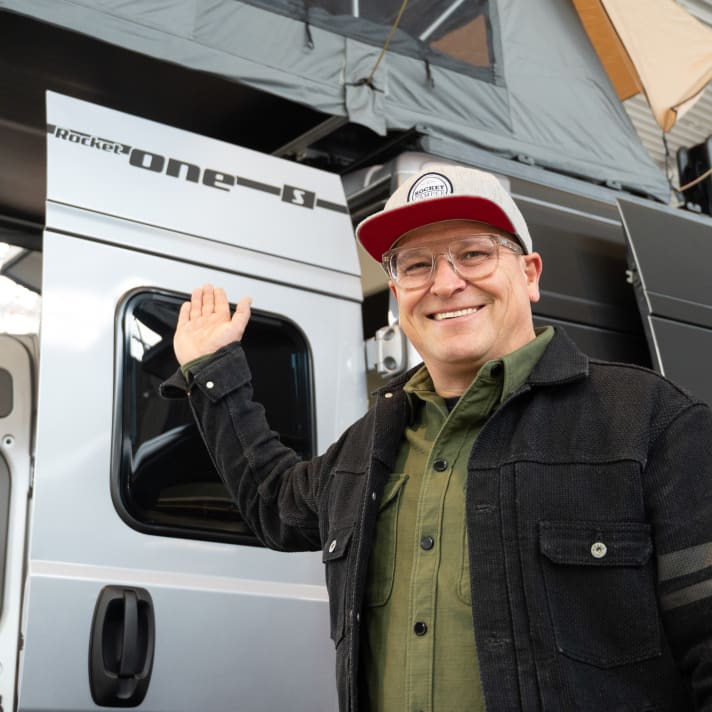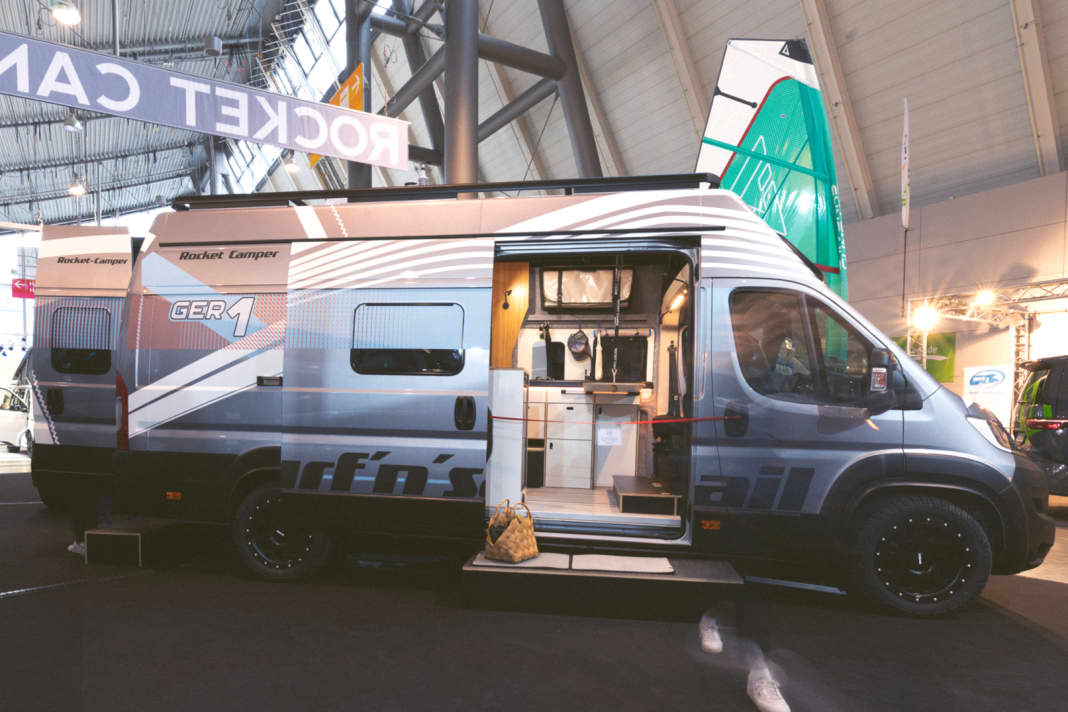Until now, surfers and sailors who wanted a customised conversion usually had to do it themselves. Although there are numerous suppliers of camper vans and conversions on the camping market, these are often not really suitable for the requirements of water sports enthusiasts. The manufacturer Rocket Camper, based in Geradstetten near Stuttgart, wants to fill this gap. We interviewed company founder Swen Dluzak at boot Düsseldorf.

Swen, how did you come up with the idea of building special campers for water sports enthusiasts?
I've been working in the industry for 20 years, and in 2015 I quit my job at motorhome manufacturer Knaus to start my own business. Even in the years before that, I kept coming up with ideas to offer campers that were specifically designed for water sports enthusiasts. Unfortunately, I found that although established manufacturers claim to want to serve the water sports community, in practice this is limited to strapping a board to the roof for the catalogue photo (laughs). That's why I decided to start my own project and founded Rocket Camper.
What distinguishes your extensions from the standard? How are the campers constructed?
We generally work with modules. The basic framework, the backbone of the expansion, so to speak, is always the same. However, we can then build on this in very different ways. All the connections such as gas, water and waste water are integrated into the modules, which ultimately makes it cheaper than going to a craftsman and having the entire extension customised. At the front, every Rocket Camper has swivel seats and a cosy living area with table, small kitchenette, storage space, toilet and fridge. At the rear, the model has Surf & Sail then the sports area, which I can also customise for myself as a customer.
A sailing family of four has different requirements to a surfing couple. To what extent can the Rocket Camper extensions be customised?
Our model Surf 'n Sail has a watertight floor pan in the rear area. Depending on whether I am a windsurfer, wingfoiler, paddler or sailor, different elements can be installed in this area: Board holders for several boards, fixed or folding beds, stowage elements for masts, sails or wings, lashing points for securing dinghies, etc. Elements such as lifting beds that can be pulled under the ceiling or, of course, a shower cubicle are also possible. What all variants have in common is that the waterproof tub allows moisture to get into the vehicle without it immediately starting to mould.

Water sports equipment naturally brings a lot of moisture into the vehicle. How do you deal with this?
As I said, the rear area is completely sealed. Water that runs out of wet neos, wings or sails cannot cause any damage and runs off in a controlled manner via a gutter. In the front area, we deliberately leave some of the internally insulated spars open. Firstly, it saves weight, and secondly, moisture can dry out again quickly. This is better than covering everything with covers, because moisture still penetrates over time and can no longer dry out. In addition, all vehicles are equipped with powerful Webasto parking heaters.
Which vehicle base are you building on?
We offer three lengths for Fiat Ducato and Peugeot Boxer buses and two different heights. We also build on MAN models, which are somewhat more compact and aerodynamic. You can get an insight into the possibilities on the Website of Rocket Camper.






